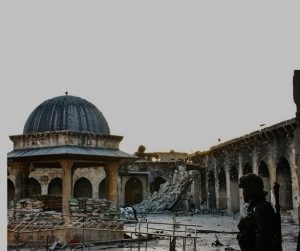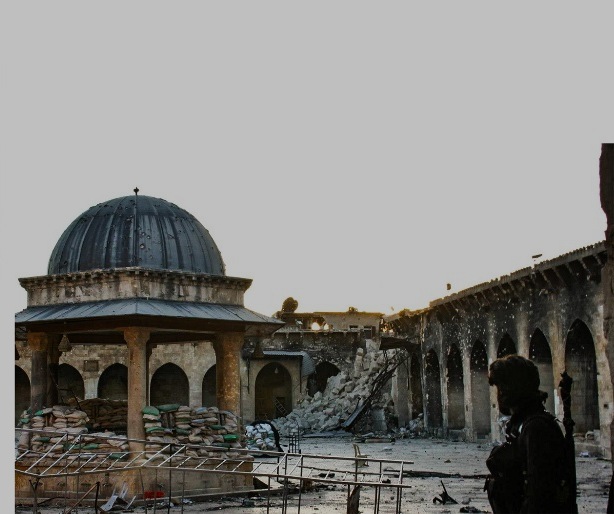
Antiquities looting, trafficking and destruction of cultural property is no longer a concern only for archaeologists, preservationists, and other concerned citizens, according to UN officials and other experts. It is a matter of worldwide security.
So stated Secretary-General of the United Nations Ban Ki-moon, when he addressed an international conference on threats to cultural heritage and diversity, organized by UNESCO (United Nations Educational, Scientific and Cultural Organization) in Paris on December 3. “The protection of cultural heritage is a security imperative,” he remarked at the UNESCO Paris headquarters.
Given recent developments in Syria and Iraq, his remarks would not be an understatement. “Armed gangs of looters have exploited the vacuum of government control, threatened residents, and hired hundreds of people to carry out illegal excavations,” said Zoe Leung, Program Fellow at the U.S. National Committee of the International Council on Monuments and Sites (US/ICOMOS), an advisory body to UNESCO on the preservation of heritage sites. “By selling newly found artifacts to middlemen and smugglers on the spot, looters profit instantly. Looting operations constitute a significant source of income for ISIS; and trade in illicit antiquities is driving conflict as lootings fund weapons that are fueling violence.”
U.S. officials at the highest levels of government have become increasingly concerned about the problem, a situation that appears to be growing worse as the chaos and violence in Syria and ISIS actions in Iraq drag on. “Ancient treasures in Iraq and in Syria have now become the casualties of continuing warfare and looting,” stated U.S. Secretary of State John Kerry in a recent speech at the Metropolitan Museum of Art in New York. “And no one group has done more to put our shared cultural heritage in the gun sights than ISIS….it is tearing at the fabric of whole civilizations….it has no respect for culture, which for millions is actually the foundation of life.” Kerry also alludes here to the economic significance cultural resources have in countries where tourism and its related industries are the bread-and-butter of many people’s lives.
_____________________________________
 Damage to the Great Mosque in Aleppo due to conflict has been an iconic symbol of the ongoing destruction and looting. Wikimedia Commons
Damage to the Great Mosque in Aleppo due to conflict has been an iconic symbol of the ongoing destruction and looting. Wikimedia Commons
______________________________________
The developing crisis has precipitated a number of high-level calls for action. Said Irina Bokova, UNESCO Director-General, “there can be no purely military solution to this crisis. To fight fanaticism, we also need to reinforce education, a defense against hatred, and protect heritage, which helps forge collective identity.” The remarks were supported by Staffan de Mistura, the UN Secretary-General’s Special Envoy for Syria, and Nikolay Mladenov, the UN Secretary-General’s Special Representative to Iraq. Both stressed the imperative to include education and culture in the developing emergency measures to protect vulnerable civilians in the conflict zones and to safeguard human rights.
To add substance to the call, Bokova and her colleagues are promoting wide-sweeping measures to stem the tide of loss and destruction. One of them focuses on establishing “protected cultural zones” around important cultural sites, requiring a cooperative/collaborativ:-)e effort by all local parties involved in the conflicts, as well as international elements, including governments, to regard such sites as ‘off limits’ in the arena of armed activities. She suggested a start could be made in places like the city of Aleppo, where the great Omayad Mosqfue has already sustained significant damage.
Other proposed measures have included an international ban on the illicit trafficking or sale of antiquities from Syria, now a major problem and source of financial support for groups like ISIS, and the creaion of a global registry of antiquities that are being placed on the market. “Creating an exhaustive registry of all antiquities of Iraqi and Syrian origins currently held in collections will enable the government to target artifacts that do not have clear legitimate titles and excavation history,” says Leung. “The registry will force buyers to prove legitimacy, sending a strong message that artifacts with questionable origins will be subject to severe scrutiny and ethical conduct investigation. The registry will bring down the market value of these artifacts and makes them less attractive to loot.”
Leung admits that creating and sustaining such a registry would not be an easy task, but would be well worth the effort, if successful. “Striving for a foolproof registry presents both challenges and opportunities,” she stated. “The endeavor is likely to strain administrative resources, yet the registry will be able to shift the burden of proof of origin and legitimacy from sellers to art dealers and antiquities buyers. Holding art dealers and private collectors accountable is vital to deter buyers from obtaining artifacts with questionable origins and from justifying such artifacts as “chance finds.”
__________________________________
More about the crisis in cultural property damage and loss in Syria and Iraq will be covered in two feature articles to be published soon in Popular Archaeology Magazine.
__________________________________
Just released!
The special new premium quality print edition of Popular Archaeology Magazine. A beautiful volume for the coffee table.
Travel and learn with Far Horizons.
Read about the most fascinating discoveries with a premium subscription to Popular Archaeology Magazine. Find out what Popular Archaeology Magazine is all about. AND MORE:
On the go? Get the smartphone version of Popular Archaeology as an app or as an ebook.
Popular Archaeology’s annual Discovery Edition eBook is a selection of the best stories published in Popular Archaeology Magazine in past issues, with an emphasis on some of the most significant, groundbreaking, or fascinating discoveries in the fields of archaeology and paleoanthropology and related fields. At least some of the articles have been updated or revised specifically for the Discovery edition. We can confidently say that there is no other single issue of an archaeology-related magazine, paper print or online, that contains as much major feature article content as this one. The latest issue, volume 2, has just been released. Go to the Discovery edition page for more information.








